- Home
- Diane Fanning
Written in Blood
Written in Blood Read online
Table of Contents
Title Page
THE STAIRWELL
1
2
3
4
5
6
7
8
9
MICHAEL PETERSON
10
11
12
ELIZABETH MCKEE RATLIFF
13
14
MICHAEL PETERSON
15
ELIZABETH McKEE RATLIFF
16
17
18
19
20
MICHAEL PETERSON
21
KATHLEEN HUNT ATWATER PETERSON
22
MICHAEL AND KATHLEEN
23
24
25
26
27
28
29
MICHAEL PETERSON
30
31
32
33
34
35
36
37
THE TRIAL
38
39
40
41
42
43
44
45
46
47
48
49
50
51
52
THE VERDICT
53
54
THE AFTERMATH
55
AFTERWORD
Acknowledgments
DON’T MISS THESE OTHER FASCINATING TRUE CRIME ACCOUNTS BY DIANE FANNING
Copyright Page
This book is dedicated to the memory of two extraordinary women— Elizabeth McKee Ratliff and Kathleen Hunt Peterson
Ascension
And if I go,
while you’re still here …
Know that I live on,
vibrating to a different measure
–behind a thin veil you cannot see through.
You will not see me,
so you must have faith.
I wait for the time when we can soar together again,
–both aware of each other.
Until then, live your life to its fullest.
And when you need me,
Just whisper my name in your heart,
… I will be there.
THE STAIRWELL
“The chance of a criminal getting caught is only slightly better than getting hit by lightning.”
-Michael Peterson, The Herald-Sun, July 1999
1
For Mary Allen, December 9, 2001, started as a long and lonely shift in the 9-1-1 call center in Durham, North Carolina. Another night spent on the outskirts of tragedy, aware of its presence but barely touched by its shadows.
At 2:40 A.M., she responded to an incoming call. Mary had no idea that she just took the first step onto the world stage of a long-playing drama.
“Durham 9-1-1. Where is your emergency?”
Breathing heavy, Michael Peterson responded: “1810 Cedar Street. Please!”
“What’s wrong?” Mary asked.
“My wife had an accident. She’s still breathing!”
“What kind of accident?”
“She fell down the stairs. She’s still breathing! Please come!”
“Is she conscious?”
A bewildered Peterson did not seem to understand the question. “What?”
“Is she conscious?” Mary repeated.
“No, no, she’s not conscious. Please!”
“How many stairs did she fall down?”
“What? Huh???”
Calmly, Mary repeated the question. “How many stairs did …”
“The back stairs!”
“How many stairs?”
“Oh, ah, ah …” His voice quaked with each syllable.
“Calm down, sir. Calm down.”
Without warning, the heavy breathing ceased and Peterson responded in an off-hand manner, “Oh, fifteen, twenty. I don’t know.” Then the hysterical tone consumed his voice again. “Please! Get somebody here, right away. Please!”
“Okay, somebody’s dispatching the ambulance while I’m asking you questions.”
“It’s off of a … It’s in Forest Hills! Okay? Please! Please!”
“Okay, sir,” she continued as Peterson whimpered. “Somebody else is dispatching the ambulance. Is she awake now?”
“Oh my,” he moaned.
“Hello?”
“I didn’t mmmm …” Peterson’s words disintegrated into an inarticulate blur of noise.
“Hello?” Allen asked again.
He whispered, “Breathe. Oh, God.” Incomprehensible mumblings burbled on the line. “Breathe,” he whispered again. All Mary could hear now were strained and rapid inhalations and exhalations that sounded like the panting of a dog.
Then there was silence—followed by the blare of a dial tone that mocked Mary’s efforts to assist.
Elizabeth Poole’s dispatch scratched out on the airways. “See an unconscious person 1810 Cedar Street. Engine 5, Medic 5. Unconscious person, 1810, 1-8-1-0 Cedar Street from East Oak Drive to Sycamore Street. Female fell down, fifteen to twenty stairs, hysterical caller is not able to give much further information, just advised it was accidental. OPS channel 2, OPS 2, Engine 5.”
From their vehicle, Jayson Crank and Andrew Johnson of the Durham Fire Department responded, “Engine 5 is 10-17.”
“10-4, no further,” signaled Elizabeth. “Medic 5, did you copy your call to 1810 Cedar Street?”
“10-4, en route,” came loud and clear from the EMS vehicle bearing Jay Rose and Ron Paige.
“Medic 5, 10-4.”
At 2:46 A.M., Michael Peterson called in again. Once again, Mary Allen answered, “Durham 9-1-1. Where is your emergency?”
“Where are they?” Michael Peterson gasped. “This is 1810 Cedar—wh … She’s not breathing! Please! Please, would you hurry up!”
In response, dispatcher Linda Gant sent out a Code 5 message indicating that the patient’s condition was critical. This change of status meant Durham police were now on their way to the scene, too.
“Sir?” Mary asked.
His voice jumped up an octave. “Can you hear me?”
“Sir? Sir?”
“Yes.”
“Calm down. They’re on their way. Can you tell me for sure she’s not breathing?”
A small click was the only answer she received.
“Sir … ?”
A dial tone echoed in her ear. “Hello … ? Hello … ?”
Over the next few hours, each person entering 1810 Cedar Street was shocked by the copious amount of blood. Blood on the walls. Blood on the floor. Blood on Kathleen.
Blood. A word that Michael Peterson left unspoken.
2
Two minutes after receiving the call, Jay Rose and Ron Paige were on their way, with Paige behind the wheel. Their siren split the silence of the night. They divided up the duties they needed to perform on the scene. Rose’s responsibilities were greater because it was his turn to ride in the back when transporting the patient to the hospital. A couple of minutes later, they barreled their cumbersome vehicle down the narrow roads of the exclusive neighborhood of Forest Hills and killed the siren.
A Christmas wreath hung on the front door of 1810 Cedar Street, obscuring the house number. The truck shot past the residence. As soon as they saw the street number on the next mailbox, they realized their mistake. Paige turned the truck around and pulled into the Petersons’ circular drive. This was no ordinary house call—the EMS responders arrived at a million-dollar mansion with a magnificent swimming pool and other trappings of a wealth th
ey would never know.
From the back of the truck, Paige grabbed the Thomas Pack, a bag filled with equipment, Band-Aids, pads and other medical supplies needed for emergency treatment. Rose snatched up the Life Pack, consisting of a monitor to determine the electrical activity of the heart and a defibrillator. They rushed down the elegant slate sidewalk.
By curious coincidence, Todd Peterson, Michael’s adult son, arrived at the same time as the first responders. He brushed past them and into the open door of the home. Paige and Rose heard a man sobbing inside as they approached the entrance.
Walking over a burgundy, gold and black rug, they saw the bottom half of Kathleen’s body protruding from the stairway to the left. Michael Peterson crouched over her body crying. No one was making any attempt to administer CPR, cardio-pulmonary resuscitation, a standard first aid procedure.
The paramedics were prepared for broken bones or paralysis from a broken neck. They were not prepared for what they found. In his career, Rose had responded to thirty or forty falls and he never once saw so much blood. He was stunned. It looked more like the scene of a massacre than a tumble down the stairs.
Kathleen’s body sprawled across the hardwood floor of the hallway, her legs spread wide. Drying blood covered the soles of her bare feet. A red-splattered roll of paper towels lay by her left foot. Next to the roll and a few wadded used towels, sat one of Michael Peterson’s athletic shoes—splatters of blood standing out in sharp relief on the white leather.
Dried blood splotched over both legs of Kathleen’s gray sweatpants. Between her spread legs, a pair of blood-spotted socks lay on the floor. At her hip and waist area, her pants were soaked to capacity with a dark, wet red. A scarlet pool flowed across the floor from under her body.
Bloodstained, half-clenched hands rested in an awkward position in her lap. Her shoulders contorted at an artificial angle against a bottom step. Her head fell backward—leaving her neck exposed as if on a sacrificial altar. The expression that greeted the emergency responders was one of abject horror.
Dried blood caked her hair in clumps as it lay on a stack of bright red towels—their original snowy whiteness disguised by a recent baptism in blood. All around her, dark red smears and spatter covered the stairs and the doorjamb and rose up high on the walls.
On the way to their patient, the paramedics asked her age and how long it had been since her fall. Mike Peterson only said, “I just went outside to turn out the lights and came in.” Then he wandered away from the stairwell and into the kitchen.
Behind the paramedics, men from the Durham Fire Department entered the house. Firefighter Jayson Crank was the first one in. He turned and pulled back the door for the others to enter. He noticed a smear of blood on the inside of the door beneath the spot where his fingers held it. But no blood lifted to his gloves—it was too dry to transfer.
The fire department personnel did not go near the body. They stood three abreast between the entranceway and the stairwell, blocking Kathleen’s body from view and preventing any civilians from entering the area from that direction.
The emergency medical technicians knelt beside Kathleen—Rose on the right side, Paige on the left. The coppery scent of spilled blood permeated the air they breathed. They worked the rapid assessment protocol with efficiency and with few words exchanged. Each man moved in rhythm to the actions of the other as if each step were choreographed for the stage. Their instinctive timing and teamwork were impeccable.
Kathleen’s pupils were dilated to 6 mm, indicating a lack of oxygen to the brain. There was no verbal activity from their patient, no motor response, no spontaneous eye movement. They determined her level of consciousness score was 3 of 3—the lowest possible score on the Glasgow Coma Scale. Kathleen had no pulse, no respiration, no blood pressure.
Paige put cardiac monitor leads on Kathleen just as he heard Todd Peterson say, “She’s dead, Dad. The paramedics are here.”
Todd may have made his assessment a bit quicker than the professionals on the scene, but he was right. No response registered on the cardiac monitor. There was zero electrical activity from her heart. Kathleen Peterson was dead—“very dead” according to Ron Paige. And it appeared as if she was dead long before Paige and Rose ever got the call to respond.
Paige stood guard by the body while Rose sought out Michael Peterson. He found him outside on the patio by the pool. The newly widowed husband was no longer crying. He was barefooted, wearing a tee shirt and shorts, and covered in blood. Small drops were scattered up and down his arms and legs and on his hands. Although his shirt was a dark navy blue, the large amount of blood on its surface was still obvious. On his khaki shorts, large red stains created a more dramatic contrast on both the front and back sides. All the blood on Michael Peterson appeared to be dry.
Rose asked Mike for Kathleen’s birth date. Peterson just gave him a blank stare. When asked for her medical history, Peterson did not respond.
Rose returned to Kathleen’s side. The two paramedics stayed by the body protecting her and the scene until they were relieved by Durham police officers.
Corporal Juanita McDowell and Officer Victor Figueroa of the Durham Police Department were the first officers on the scene. They entered the house where the emergency medical technicians were still checking for vital signs. McDowell saw Michael Peterson in the kitchen area with Todd’s arm around his shoulders.
The officers saw a chair lift attached to the wall of the stairwell. The seat was folded up, but still they wondered if it played a role in the incident. They also made the mistaken assumption that Kathleen was disabled. They did not know the lift had been installed by the previous owner and simply was never removed by the Petersons.
In less than ten minutes McDowell knew that this scene did not look like a typical accidental fall. There was too much blood—and it no longer had the sheen she always saw where the blood was freshly spilled. She called the criminal investigations division on her radio.
Avoiding the stairwell area, McDowell walked the long way around to the kitchen and asked Todd Peterson for a telephone. He stepped to the edge of the stairway and plucked a portable phone off a step there before Paige or Rose had a chance to object. McDowell then put Todd and Mike out on the patio.
At the door, firefighters contended with the arrival of Todd Peterson’s friends, Ben Maynor, and Heather Whitson. Todd phoned Maynor minutes earlier and told him to come to the house, and to bring Heather, a medical resident at Duke University.
In a loud voice, an intoxicated Maynor insisted, “Get out of the way. Get out of the way. She’s a doctor, she can help.”
The firefighters turned to the sober Whitson, dressed in a burgundy top and black pants for the casual holiday party she had just abandoned. “I’m a doctor. Is there anything I can do?”
“No. It’s too late for that. You need to wait outside.”
Todd came to the door and intervened. Telling the firefighters it was all right, he ushered Ben and Heather inside. “Please look at my dad, Heather,” Todd requested. “He is in shock.”
The medical resident went out on the patio where Michael Peterson sat with a blank look on his face. At her arrival, he stood up and paced back and forth, crying and moaning.
The Petersons’ two English bulldogs, who had been placid earlier, were now growling at the emergency responders and trying to push their way into the house. At McDowell’s request, Christina Tomasetti, who had arrived at the house with Todd Peterson, corralled the dogs and put them in a closed room.
Christina caught a glimpse of Kathleen Peterson at the foot of the stairs. She jerked her head away from the bloody scene. She had no desire for a closer look. As she put the dogs in the den, she learned that Kathleen was dead.
McDowell stepped outside and awaited the arrival of the investigators.
1810 Cedar Street was now a crime scene.
3
ID Tech Dan George knocked on the closed side door and was told to come in. From the kitchen, he observ
ed the victim from a distance of four or five feet. He saw large quantities of blood all over the floor, the wall and the victim’s hands and feet. He realized that the blood on the floor was congealed and what was on the wall was smeared and dried. To his experienced eye, the evidence did not appear to point to an accidental fall. He left the house to contact the criminal investigation division (CID).
As he exited, he saw a drop of blood on the slate porch. He went to his car to get a flashlight and continued his search for more blood. He found a trace on the mortar between the bricks of the sidewalk about six feet away from where he saw the first drop. He put small pieces of paper by the blood and moved a planter into the path to avoid inadvertent trampling of the evidence.
Todd Peterson came out of the house to move his car. McDowell asked him, “Is the victim handicapped?”
“No,” Todd said. “She drinks a lot and did a lot of drinking four hours earlier.”
When she asked him who was in the house at the time, he told her that only his dad and his stepmother were at home.
Ben Maynor stumbled out of the house. He reeked of alcohol and his speech was slurred alerting police that he was too intoxicated to be moving vehicles out of the way as he planned. He was sent back inside. The presence of Todd’s drunken friend added a layer of chaos to a complicated scene filled with dozens of officers and first responders who were trying to do their jobs.
Sergeant Terry Wilkins arrived and took charge of the scene. He spotted the lower half of a body at the foot of the back stairs. He continued foward until he saw the large area of blood outside the staircase in the hallway. He stopped moving—he realized the scene needed to be secured with more crime-scene tape.
Wilkins noted a large spot of blood outside the staircase in the hallway near the front of the door. It had a glazed surface with no sheen of wetness. It was then that he got his first look at Michael Peterson—he was covered with blood and in an apparent state of shock. Wilkins said nothing to Peterson at the time. He was too focused on analyzing and securing the scene.

 Death on the River
Death on the River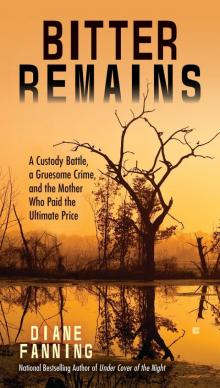 Bitter Remains
Bitter Remains Gone Forever
Gone Forever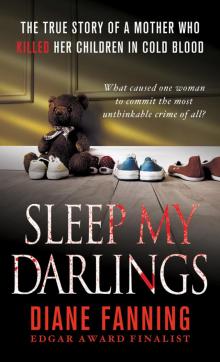 Sleep My Darlings
Sleep My Darlings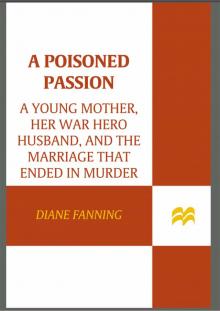 A Poisoned Passion
A Poisoned Passion Through the Window: The Terrifying True Story of Cross-Country Killer Tommy Lynn Sells (St. Martin's True Crime Library)
Through the Window: The Terrifying True Story of Cross-Country Killer Tommy Lynn Sells (St. Martin's True Crime Library) Chain Reaction
Chain Reaction Baby Be Mine
Baby Be Mine The Pastor's Wife
The Pastor's Wife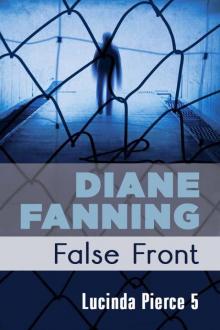 False Front (Lucinda Pierce)
False Front (Lucinda Pierce) Under Cover of the Night
Under Cover of the Night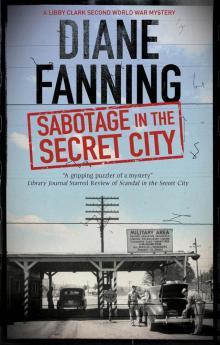 Sabotage in the Secret City
Sabotage in the Secret City Written in Blood
Written in Blood Treason in the Secret City
Treason in the Secret City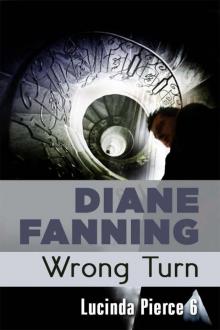 Wrong Turn
Wrong Turn Under the Knife
Under the Knife Mommy's Little Girl
Mommy's Little Girl Scandal in the Secret City
Scandal in the Secret City